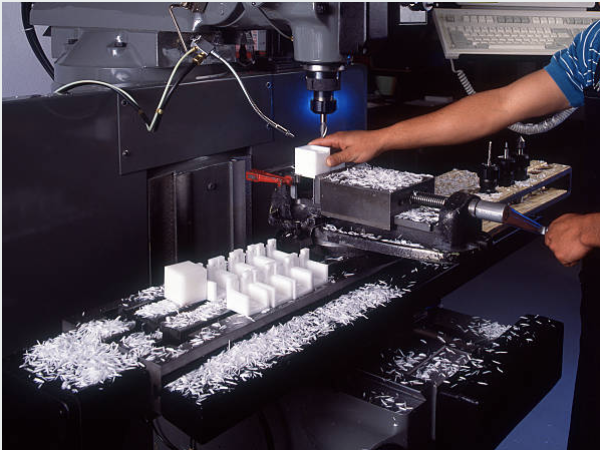Lately, there’s been a notable move in the healthcare sector towards the use of plastics in medical equipment. This isn’t merely a passing phase. The distinct characteristics of plastics, particularly those of medical quality, render them ideal for numerous medical applications. Whether it’s basic medical tubing or intricate medical device components, the flexibility and suitability of these substances cannot be overlooked. So, what makes plastic indispensable in the medical realm? Let’s explore further.
What are Medical-Grade Plastics?
So, what distinguishes medical-grade plastics? These aren’t common plastic materials. Medical-grade plastics are designed with precision to meet strict standards of biocompatibility, chemical resistance, and other significant factors. They are, in essence, the VIPs of the plastic industry. These plastics are rigorously assessed to ensure their safety for medical applications, especially when they interact with the human body. Materials like medical-grade polypropylene and polycarbonate are prime instances. They find usage in a broad array of medical device plastics, from simple products like disposable syringes to complex medical implants.
But why are these plastics so exceptional? Well, they are obligated to pass rigorous FDA regulatory classifications, ensuring their fitness for medical applications. They are frequently resistant to sterilization methods such as gamma radiation and ethylene oxide, attributed to their durability and long-lasting nature. These plastics are also highly versatile, and apt for various medical applications, from simple plastic components like connectors to more sophisticated devices like dialysis machines. Their adaptability and safety profile make them a cornerstone in the medical industry, and they are a top choice for manufacturers seeking high-quality, cost-efficient materials.
What are the Primary Benefits of Using Plastics Over Metals in Medical Devices?
The medical industry is increasingly leaning towards plastics over metals, and here’s why:
- Lightness: Plastics, being lighter than metals, enhance the user experience by minimizing fatigue, leading to better patient care. For perspective, plastic surgical tools are nearly 80% lighter than metal ones.
- Adaptable Design: Plastics grant more design freedom than metals, catering to industries requiring varied design, texture, and form options. This also expedites the material procurement process.
- Economic Efficiency: Plastics offer a cost-friendly alternative to metals in medical device manufacturing. They’re not only disposable and versatile but also durable, often outperforming devices made from materials like steel or ceramic.
- Robustness: Plastics resist various external factors, from chemicals to environmental conditions, making them a dependable choice for medical instruments.
- Safety in Application: Medical-grade resins, being biocompatible, can be used in devices like joint replacements without causing harmful body reactions.
- Chemical Tolerance: Compared to metals, plastics stand up better against chemicals, making them suitable for devices exposed to chemical agents.
- Sustainability: Being recyclable, plastics support a sustainable approach. They can be repurposed multiple times, reducing the need for fresh material sourcing. To wrap up, plastics present a myriad of benefits over metals in the realm of medical devices, from their lightweight nature to their recyclability.
Types of Polymers: Thermoplastics, Thermosets, and Elastomers
Thermoplastics, thermosets, and elastomers are three separate categories of plastics, each with its own set of physical attributes. Here’s how they compare:
Thermoplastics
- Can be reshaped by heating within a certain temperature band.
- This reshaping is reversible and can be repeated by cooling and reheating, as long as the material doesn’t thermally degrade.
- Capable of withstanding very high temperatures, requiring even higher heat for melting.
- Their polymer chains, whether branched or linear, remain isolated and distinct.
Thermosets
- Maintain their form and structure after curing due to crosslinking.
- Once set, their polymers are insoluble.
- Ideal for electrical systems because of their mechanical and chemical stability at elevated temperatures.
- Exist in three specific states: Stage 1, Stage 2, and Stage 3.
- Stay molten only for a short time before heat triggers cross-linking.
Elastomers
- Exhibit characteristics of both thermosets and thermoplastics.
- Initially function like thermoplastic polymers, having distinct chains.
- Can stretch considerably and snap back quickly and forcefully.
- Suitable for uses such as seals, gaskets, and O-rings.
To conclude, thermoplastics can be deformed by heating, thermosets maintain their form after curing, and elastomers have properties of both.
Commonly Used Thermoplastics in Medical Devices
The medical device manufacturing industry often turns to specific thermoplastics, prized for their biocompatibility, endurance, and chemical resistance. Here are some of the most commonly used thermoplastics in medical devices:
Polyethylene: Known for its durability and lightness, it’s a go-to for items like syringes and catheters.
Polypropylene: This is a versatile and cost-effective thermoplastic that is used in a variety of medical devices, including surgical instruments, labware, and packaging.
Polymethyl methacrylate (PMMA): Its clarity is perfect for applications like intraocular lenses and dental implants.
Polyvinyl chloride (PVC): A flexible thermoplastic, it’s found in IV bags, tubes, and blood storage bags.
Polyamide: Renowned for its toughness, it’s used in surgical tools and implantable devices.
Acrylonitrile butadiene styrene (ABS): Its robust nature is ideal for electronic equipment casings and surgical instruments.
All in all, thermoplastics such as polyethylene, polypropylene, PMMA, PVC, polyamide, and ABS are pivotal in the medical device sector due to their distinct attributes.
| Sl.No | Application of medical devices | Polymer selection |
| 1 | Non-contact with human body, e.g. syringes, blood storage bags, glucose drip bags | PVC,PA,PE,PS, Epoxy resins |
| 2 | Short-term contact with human body, e.g. catheters, feeding tubes, drainage tubes, surgical instruments | Silicone rubber, Natural rubber, PVC, Polyurethane, PE, PP, Polyester, PEEK, Polyphenylsulfone, Nylon, Teflon, PeBax |
| 3 | Medium term contact with human body, e.g. cultures, ligatures | Nylon, PP, Polyester |
| 4 | Long term contact with human body, e.g. implants, drug delivery devices | PE, UHMWPE, PET, Silicone rubber, Polyurethane, PMMA, Polysulphones, Hydrogels Polyphosphazenes, Thermoplastic elastomers, Polydimethylsiloxane |
The Role of Biocompatibility in Material Selection
What does the term ‘biocompatibility’ signify in relation to medical devices? At its core, it’s about confirming that a material is compatible with human tissues. According to the U.S. Food and Drug Administration (FDA), medical-grade plastics like polypropylene or polycarbonate must meet ISO 10993 standards for biocompatibility. This is an essential requirement, as non-compliance could lead to severe complications. For instance, a 2019 study published in the Journal of Biomedical Materials Research found that non-biocompatible materials could lead to inflammation, infection, and even systemic toxicity.
To ensure they are safe for human contact, these medical grade plastics undergo a series of rigorous tests. According to the American Society for Testing and Materials (ASTM), these tests include cytotoxicity, sensitization, and irritation or intracutaneous reactivity tests, among others, to rule out negative reactions like inflammation or toxicity. But the focus isn’t solely on the plastic; the entire production process, including any additives or coatings, must also pass biocompatibility tests. A 2020 report by the Regulatory Affairs Professionals Society (RAPS) emphasized that even minor changes in manufacturing processes could affect a material’s biocompatibility.
The critical nature of biocompatibility cannot be emphasized enough. It is the linchpin of patient safety in the medical device sector. According to a 2018 report by the World Health Organization (WHO), medical devices are used by up to 10% of the population worldwide, making their safety a global concern. Whether dealing with medical products like a syringe or a complicated implant, the biocompatibility of the materials used is of the utmost importance. Given that these devices often remain in direct contact with the body for extended periods—as highlighted by a 2017 study in the Journal of Clinical Medicine, which found that some implants can remain in the body for over a decade—ensuring their safety is imperative.
FDA Regulatory Classes and Their Impact on Material Selection
The Food and Drug Administration (FDA) serves as a linchpin in the medical device industry, tasked with ensuring that devices are both safe for use and functionally effective. But how does this framework apply to plastics?
Medical devices are stratified by the FDA into three risk categories: Class I (minimal risk), Class II (moderate risk), and Class III (elevated risk). Each of these categories has its own set of regulatory standards, which play a role in determining material choices.
As an illustration, a Class I device, such as a tongue depressor, might not be subject to the same intensive material assessments as a Class III device, like a heart valve. The FDA’s guidelines are in place to ensure that the plastics employed in these devices adhere to the requisite safety and performance criteria.
In the selection of materials, manufacturers must juggle the practical needs of the device with the regulatory demands of its classification. This intricate balancing act is vital to ensure the well-being of patients.fety.
What is the Process for FDA Approval of Plastics Used in Medical Devices?
Navigating the FDA approval process can be a daunting task, especially when it comes to plastics in medical devices. But why is this process so crucial? Well, it’s all about ensuring patient safety. The FDA wants to make sure that any plastic used in a medical device is safe, effective, and won’t cause harm.
The journey begins with pre-market testing. This involves rigorous laboratory tests to assess the plastic’s biocompatibility, chemical resistance, and overall performance. But it’s not just about the plastic itself. The FDA also looks at the entire manufacturing process, including any additives or coatings used.
Once the pre-market testing is complete, manufacturers submit their data to the FDA for review. This is where the real scrutiny begins. The FDA reviews the data, assesses the risks, and determines whether the plastic is suitable for its intended use.
But the journey doesn’t end there. Even after approval, the FDA continues to monitor the plastic’s performance in the real world. This post-market surveillance ensures that any potential issues are identified and addressed promptly.
In essence, the FDA approval process is a multi-layered safety net, ensuring that plastics used in medical devices are up to the task.
Physical Properties for Optimal Performance
When selecting plastics for medical devices, it’s not just about biocompatibility. The physical properties of the plastic play a crucial role in determining its suitability for a particular application. Let’s break it down.
Tensile strength, for instance, refers to the plastic’s ability to withstand pulling forces. For devices that need to bear weight or tension, a high tensile strength is essential. Then there’s the plastic’s elasticity, which determines how much it can stretch and return to its original shape. This is crucial for devices like catheters or medical plastic tubes that need to be flexible.
Thermal properties are another key consideration. How does the plastic behave at high temperatures? Can it withstand sterilization cycles without degrading? These are critical questions that manufacturers must answer.
In essence, the physical properties of a plastic determine its performance in real-world medical applications. It’s a complex puzzle, but one that manufacturers must solve to ensure their devices are safe, effective, and durable.
Sterilization Methods and Their Effects on Plastics
Sterilization is a non-negotiable in the world of medical devices. After all, no one wants a contaminated device. But how does sterilization impact plastics?
Different plastics react differently to sterilization methods. Some can withstand high temperatures, while others might degrade. Methods like gamma radiation, ethylene oxide, and autoclave are commonly used, but each has its own set of challenges.
For instance, gamma radiation is effective, but it can cause certain plastics to become brittle. Ethylene oxide is less harsh on plastics, but it’s a lengthy process and can leave toxic residues. Autoclaving involves high temperatures, which not all plastics can withstand.
In essence, selecting the right plastic for a medical device isn’t just about its physical properties or biocompatibility. It’s also about ensuring that the plastic can withstand the sterilization method used, ensuring patient safety and device longevity.
The 510(k) and PMA Approval Processes
When it comes to FDA approval, two primary pathways come to mind: the 510(k) and the PMA (Premarket Approval) processes. But what are these, and how do they relate to plastics in medical devices?
The 510(k) process is a bit like taking a shortcut. Instead of proving that a new medical device is safe and effective from scratch, manufacturers can demonstrate that their device is substantially equivalent to an already approved device. This can save time and resources. However, it’s essential that the materials used, including plastics, are consistent in quality and performance with the predicate device.
On the other hand, the PMA process is more rigorous. It’s reserved for high-risk devices that don’t have a predicate. Here, manufacturers must provide robust evidence of the device’s safety and effectiveness. This often involves extensive testing of the plastics used, ensuring they meet all the necessary criteria for biocompatibility, durability, and performance.
In both processes, the choice of plastic plays a pivotal role. It’s not just about picking a material that fits the bill; it’s about ensuring that the plastic can stand up to the rigorous demands of the FDA approval process.
What are the Challenges Faced by Manufacturers When Molding Medical-Grade Plastics?
Molding medical-grade plastics is no walk in the park. Manufacturers face a myriad of challenges, from ensuring consistent quality to navigating the complexities of intricate designs.
One of the primary challenges is maintaining the biocompatibility of the plastic. The molding process, including the temperatures and pressures used, can affect the plastic’s properties. Additives or coatings introduced during molding can also impact biocompatibility.
Then there’s the challenge of precision. Many medical devices have intricate designs with tight tolerances. Ensuring that the molded plastic meets these specifications every single time is crucial. Any deviations can compromise the device’s performance and safety.
Another challenge is scalability. While it might be easy to mold a few prototypes, scaling up to mass production while maintaining consistent quality can be a daunting task.
In essence, molding medical-grade plastics is a delicate balancing act. Manufacturers must navigate a maze of challenges to produce devices that are safe, effective, and up to the mark.
Conclusion
Plastics have revolutionized the world of medical devices. From their versatility to their cost-effectiveness, they offer a plethora of benefits. But with these benefits come challenges. Whether it’s navigating the FDA approval process or ensuring consistent quality during molding, manufacturers have their work cut out for them.
This is where expert services like those offered by SeaskyMedical can make a significant difference. Specializing in injection molding services, SeaskyMedical employs a team of experts who can guide medical device manufacturers in choosing the most suitable medical-grade plastics for their projects. With our expertise, you can navigate the complexities of material selection, FDA approval, and manufacturing with greater ease and confidence.
So, with the right materials and processes in place, the potential of plastics in the medical world is boundless. Partnering with knowledgeable service providers like SeaskyMedical can help ensure that your medical devices are not only innovative but also safe and effective.




